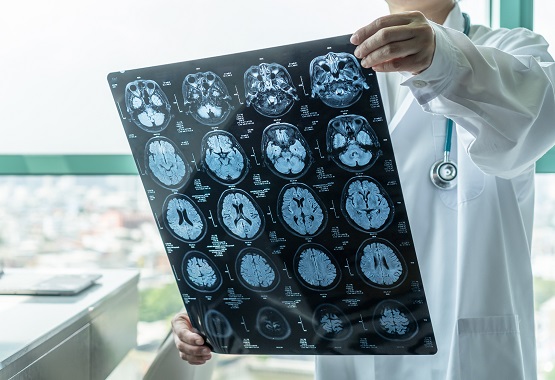Are Your Pounding Headaches a Sign of Migraine? What Exactly is Migraine?

Suffering from unrelenting, pounding headaches? Dr Queck Kian Kheng, consultant neurologist from KK Queck Neurology Centre at Mount Alvernia Hospital explains how to navigate this common and often debilitating condition.
Have you ever experienced an intense pulsating pain on one side of the head? That is most likely a migraine. The pain can last for four to 72 hours and is usually accompanied by some sensitivity to light, sound, and smell, and sometimes nausea and vomiting. They usually worsen with physical activities and can affect your daily function too.
Around 20% of migraines are preceded by aura, which include visual or language disturbances. and altered sensations. The migraine typically develops gradually and the aura symptoms can last anywhere from five minutes to an hour.
But how do they occur?
Unravelling the migraine mystery
A migraine is more than just a bad headache. It is a neurological disorder with a complex pathophysiology involving the peripheral and central nervous system. Activation of the trigeminal system leads to release of vasoactive neuropeptides, in particular calcitonin gene-related peptide (CGRP), which eventually leads to a sequence of events that trigger migraine.
Migraines are the second leading cause of disease burden in Singapore, affecting up to 10% of the population. It is crucial to make an accurate diagnosis so that the headache can be better managed.
A migraine is a clinical diagnosis and there are two main types, namely — an episodic migraine, which occurs fewer than 15 days per month, and a chronic migraine, one that occurs 15 or more days per month, and lasts for more than three months.
Diagnosing migraines first involves understanding their various phases:
- Prodrome: characterised by symptoms such as food cravings and lethargy
- Aura: lasts for 5 to 60 minutes and involves visual or language disturbances
- Headache: feeling of intense, unilateral pulsatile pain that can last up to 72 hours
- Postdrome: patients may experience similar symptoms like those in the prodrome phase
Neuroimaging is typically unnecessary if clinical symptoms suggest migraine and there are no other red flags.
There are certain health indicators that may warrant further evaluations so that the doctor can rule out other possible underlying secondary causes of your migraine. Using a method called SNNOOP, the signs include:
- S – Systemic symptoms like fever
- N – Neoplasm, those with underlying history of malignancies
- N – Neurological deficit from examination
- O – Onset of headache which is thunderclap in nature
- O – Older age of onset especially after age of SO
- P – Post-traumatic in nature, change of pattern of the headache, positional type of headache, headaches that are pregnancy-related or due to overuse of painkillers.
Migraine management
Effective migraine management starts from making lifestyle changes to a healthier one and identifying major triggers that lead to your migraine. Once you know what triggers your migraine, eliminating or avoiding them can help in long term management of a migraine.
Techniques like stress management, relaxation, and acupuncture can also reduce migraine frequency.
Pharmacological treatments, both acute relief and preventive, can be used as long as they are tailored to individual needs, considering the severity of the migraine, patient preference, and underlying health conditions.
Medicines for episodic and chronic migraines include beta blockers (e.g. metoprolol and propranolol), anticonvulsants (e.g. topiramate, sodium valproate). calcium channel blockers (e.g. flunarizine), antidepressants (e.g. amitriptyline), and the more recent CGRP monoclonal antibodies (e.g. erenumab. fremanezumab).
CGRP monoclonal antibodies are a new type of preventive treatment drugs for migraines that target the CGRP. The drugs are Aimovig (erenumab), Ajovy (fremanezumab), and Emgality (galcanezumab) which are offered through subcutaneous injections; and Vyepti (eptinezumab) which is given via infusion over 30-minute durations. Additionally, Nurtec (rimegepant), a gepant medication, provides an alternative for patients intolerant to triptans (another class of drugs for migraine treatment), serving both acute and preventive purposes.
Remember that managing migraines is a holistic journey. By understanding the symptoms, seeking proper diagnosis, embracing lifestyle changes, and recognising any warning signs, coupled with exploring new treatments, individuals can navigate the complexities of migraines effectively.
Understanding migraine triggers
Migraine triggers are often unique to each individual. The triggers typically encompass several factors such as stress, hormonal fluctuations, and dietary choices.
- Stress: Whether from work pressure or personal issues, stress can trigger migraines by causing muscle tension and constricting blood vessels.
- Hormonal changes: This affects women during menstruation, pregnancy, or menopause.
- Diet: Certain foods and drinks, such as aged cheese, caffeine, and alcohol, are notorious triggers for many.
Self-care
Self-care strategies to manage migraines:
- Relaxation techniques: Deep breathing, meditation, and yoga can help relieve stress.
- Dietary modifications: Take regular meals and avoid trigger foods.
- Prioritise Sleep: Consistent sleep patterns and relaxing bedtime routines improve overall well-being.
- Hydration and exercise: Staying hydrated and maintaining a balanced lifestyle play vital roles in migraine control.
Article contributed by Dr Queck Kian Kheng, accredited doctor from Mount Alvernia Hospital.
This article is taken from our MyAlvernia Magazine Issue #51. Click here to read the issue on our website.
